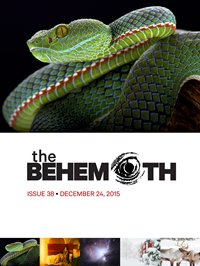Why Mary Is So Blessed
An Orthodox theologian describes how the Mother of God is what all creation was created to be. /
In the West, Mary is primarily the Virgin, a being almost totally different from us in her absolute and celestial purity and freedom from all carnal pollution. In the East she is always referred to and glorified as Theotokos, the Mother of God, and virtually all icons depict her with the Child in her arms. There exist, in other words, two emphases in mariology, which, although they do not necessarily exclude one another, lead to two different visions of Mary’s place in the Church. The veneration of Mary in the Orthodox Church is not so much a specific “cult of Mary,” as a light, a joy, proper to the whole life of the church. In her, says an Orthodox hymn, “all creation rejoices.”
But what is this joy about? Why, in her own words, shall “all generations call me blessed”? Because in her love and obedience, in her faith and humility, she accepted to be what from all eternity all creation was meant and created to be: the temple of the Holy Spirit, the humanity of God. She accepted to give her body and blood—that is, her whole life—to be the body and blood of the Son of God, to be mother in the fullest and deepest sense of this word, giving her life to the Other and fulfilling her life in him. She accepted the only true nature of each creature and all creation: to place the meaning and, therefore, the fulfillment of her life in God.
In accepting this nature she fulfilled the womanhood of creation. This word will seem strange to many. In our time the church, following the modern trend toward the “equality of the sexes,” uses only one-half of the Christian revelation about man and woman, the one which affirms that in Christ there is neither “male nor female” (Gal. 3:28). The other half is ascribed again to an antiquated world view. In fact, however, all our attempts to find the “place of woman” in society (or in the church) instead of exalting her, belittle woman, for they imply too often a denial of her specific vocation as woman.
Yet is it not significant that the relation between God and the world, between God and Israel, his chosen people, and finally between God and the cosmos restored in the church, is expressed in the Bible in terms of marital union and love? This is a double analogy. On the one hand we understand God’s love for the world and Christ’s love for the church because we have the experience of marital love, but on the other hand marital love has its roots, its depth and real fulfillment in the great mystery of Christ and his church: “But I speak concerning Christ and the church.” The church is the Bride of Christ (“… for I have espoused you to one husband, that I may present you as a chaste virgin to Christ,” 2 Cor. 11:2). This means that the world—which finds its restoration and fulfillment in the church—is the bride of God and that in sin this fundamental relationship has been broken, distorted. And it is in Mary—the Woman, the Virgin, the Mother—in her response to God, that the church has its living and personal beginning.
This response is total obedience in love; not obedience and love, but the wholeness of the one as the totality of the other. Obedience, taken in itself, is not a “virtue”; it is blind submission and there is no light in blindness. Only love for God, the absolute object of all love, frees obedience from blindness and makes it the joyful acceptance of that alone which is worthy of being accepted. But love without obedience to God is “the lust of the flesh, and the lust of the eyes, and the pride of life” (1 Jn. 2:16), it is the love claimed by Don Juan, which ultimately destroys him. Only obedience to God, the only Lord of Creation, gives love its true direction, makes it fully love.
True obedience is thus true love for God, the true response of Creation to its Creator. Humanity is fully humanity when it is this response to God, when it becomes the movement of total self-giving and obedience to him. But in the “natural” world the bearer of this obedient love, of this love as response, is the woman. The man proposes, the woman accepts. This acceptance is not passivity, blind submission, because it is love, and love is always active. It gives life to the proposal of man, fulfills it as life, yet it becomes fully love and fully life only when it is fully acceptance and response. This is why the whole creation, the whole church—and not only women—find the expression of their response and obedience to God in Mary the Woman, and rejoice in her. She stands for all of us, because only when we accept, respond in love and obedience—only when we accept the essential womanhood of creation—do we become ourselves true men and women; only then can we indeed transcend our limitations as “males” and “females.”
Excerpted from For the Life of the World by Alexander Schmemann, published in 1973 by St. Vladimir's Seminary Press (www.svspress.com). Used by permission.
Also in this Issue
Issue 38 / December 24, 2015- Editor's Note from December 24, 2015
Issue 38: Virgin births in the animal kingdom, a modern Wise Man’s journey, and the womanhood of creation. /
- Virgin Births Happen All the Time
Birds do it. Bees do it. Snakes, sharks, lizards, and lots of other animals do it solo too. /
- Staring at the Suns
What I’ve learned as an amateur astronomer. /
- Noel
“We hear and sing / The customary carols” /
- Wonder on the Web
Issue 38: Links to amazing stuff.


